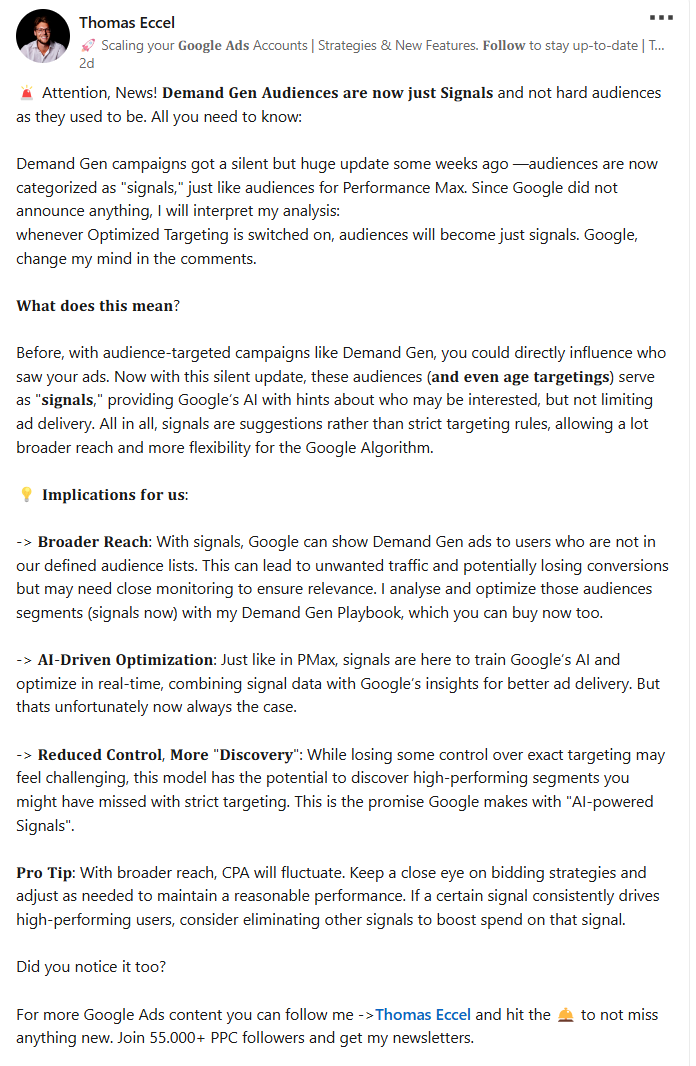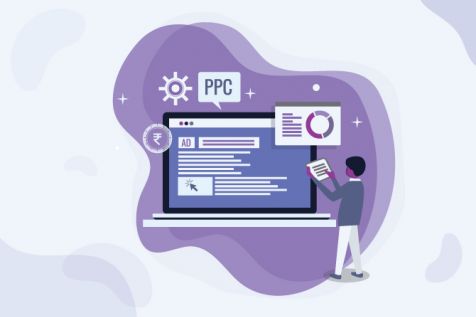Santosh Singh talks about Online Advertising
10 Benefits of PPC for Small Business
Jan 11, 2019
PPC Campaign is one of the successful methods to generate profit on online promotion. It offers a lot of opportunities to small scale business firm...
Nov 11, 2024
by Santosh Singh

You may already know that Demand Generation (or Demand Gen for short) is all about creating a buzz and getting potential customers excited about your products or services. It's a crucial part of any successful digital marketing strategy, and Google Ads plays a major role. But Google has quietly shifted the goalposts, and it's vital to understand what's changed.
In a nutshell, Google has moved away from using strict audience lists to target your ads. Instead, they've adopted a new system based on "signals". Think of these signals as hints or clues about your ideal customer, rather than a rigid set of rules.
Instead of telling Google exactly who to show your ads to, you'll now provide it with signals about your target audience. These signals include demographics, interests, and behaviours. Google's clever algorithms then use these signals to find people who are most likely to be interested in your offering.
While Google hasn't officially announced this update, industry experts believe it's part of a broader move towards AI-powered advertising.
Google aims to:
Improve ad relevance: Showing ads to genuinely interested users, even if they fall outside predefined audiences.
Expand reach: Potentially reaching a wider audience than with traditional targeting methods.
Enhance campaign performance: Optimising ad delivery for better results.
This change has significant implications for how you run your Demand Gen campaigns:
Less control, broader reach: While you might reach a wider audience, you'll have less control over exactly who sees your ads.
Performance fluctuations: This shift could lead to less predictable performance and conversion rates.
New opportunities: Google's algorithms might uncover high-performing audience segments you hadn't considered before.
Here are a few tips:
Refine your signals: Provide Google with clear and accurate signals about your ideal customer.
Monitor performance closely: Keep a close eye on your campaign metrics and adjust your bidding strategies as needed.
Embrace the learning curve: Be prepared to experiment and learn how to best leverage this new system.
Thomas Eccel, who runs a Demand Gen training programme, shared his insights on LinkedIn: "With signals, Google can show Demand Gen ads to users who are not in our defined audience lists." This highlights the potential for both expanded reach and the need for careful monitoring.

Google's move towards "signals" is a clear indication of the growing role of AI in digital advertising. As marketers, we need to stay informed and adapt our strategies to make the most of these advancements.
At Envigo, we're dedicated to helping businesses navigate these changes and achieve their Demand Gen goals. Book a free consultation to know more.


Santosh Singh talks about Online Advertising
Jan 11, 2019
PPC Campaign is one of the successful methods to generate profit on online promotion. It offers a lot of opportunities to small scale business firm...


Santosh Singh talks about Online Advertising
Nov 21, 2018
There are many instances where users put the keywords on hold because they do not receive click or impression volume.